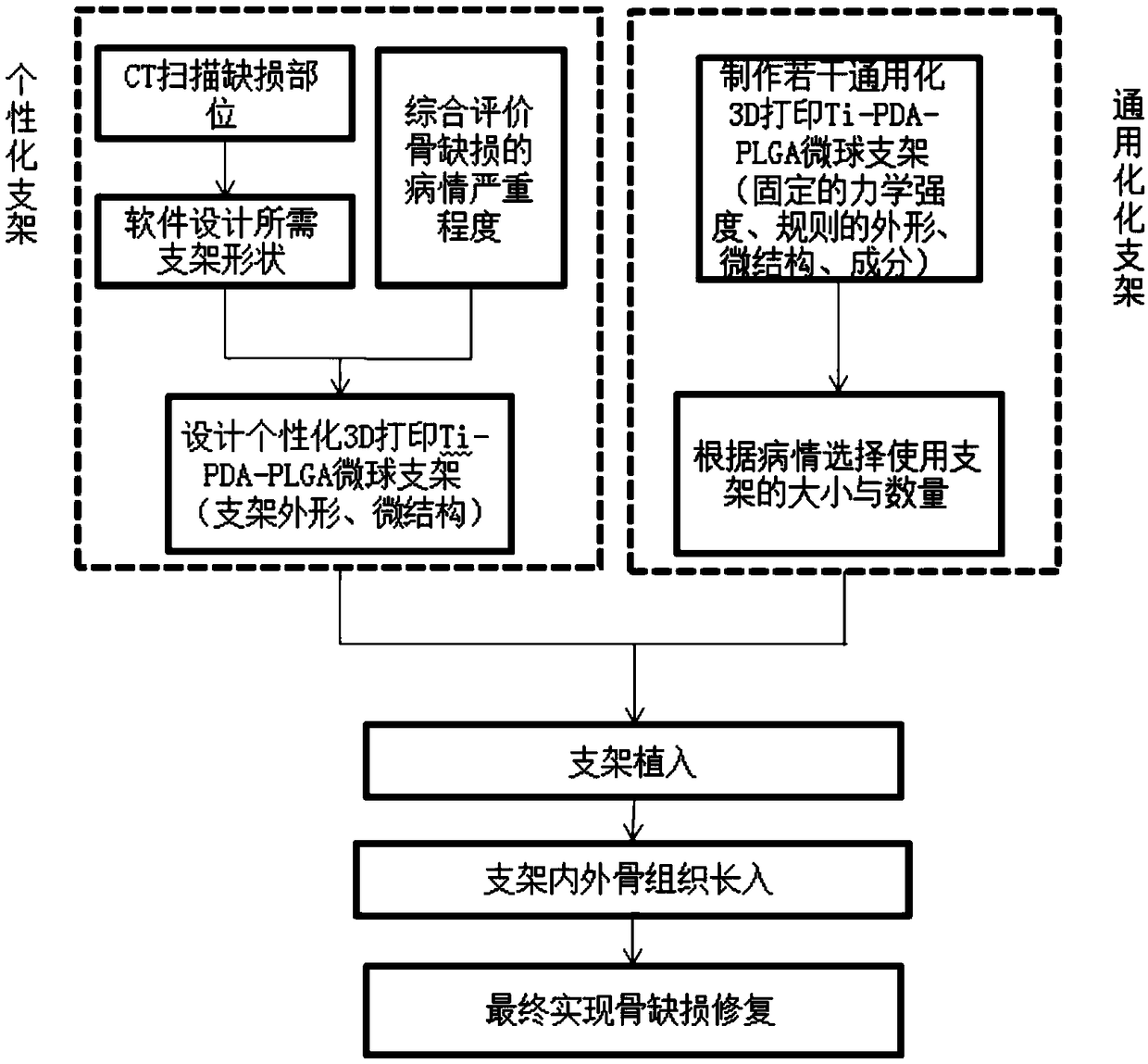3D printed Ti-PDA-PLGA microsphere bone defect repair stent
A 3D printing and PLGA technology, applied in microcapsules, coatings, medical science, etc., can solve the problems of unguaranteed biological safety, high price, pathogen transmission, etc., and achieve good bone ingrowth characteristics and biological safety , Improved hydrophilicity and biocompatibility, and the effect of good biocompatibility
- Summary
- Abstract
- Description
- Claims
- Application Information
AI Technical Summary
Problems solved by technology
Method used
Image
Examples
Embodiment 1
[0046] 1. Preparation of 3D printed Ti scaffolds
[0047] Using Ti 6Al4V powder as a raw material, a 3D printed Ti scaffold with a 64% porosity fiber grid structure formed by laser sintering technology ( figure 2 , 3 ). Its shape can be 3D printed and personalized according to the shape of the bone defect in the area to be repaired. It can also be manufactured as a scaffold material with a fixed shape through SLM technology, and it can be filled according to the actual bone defect requirements during the operation.
[0048] 2. Preparation of 3D printed Ti-PDA scaffold
[0049] After the stent structure is constructed by 3D printing, the surface is modified using PDA. The specific steps include:
[0050] 1) preparation concentration is the hydrochloric acid (HCL) solution of 0.5mol / L;
[0051] 2) Weigh 0.61g Tris and add it into 500ml water to dissolve, after stirring, add the prepared 0.5mol / L HCL solution dropwise to adjust to pH=8.5, and prepare Tris-HCL solution for la...
PUM
| Property | Measurement | Unit |
|---|---|---|
| concentration | aaaaa | aaaaa |
| concentration | aaaaa | aaaaa |
Abstract
Description
Claims
Application Information
 Login to View More
Login to View More - R&D
- Intellectual Property
- Life Sciences
- Materials
- Tech Scout
- Unparalleled Data Quality
- Higher Quality Content
- 60% Fewer Hallucinations
Browse by: Latest US Patents, China's latest patents, Technical Efficacy Thesaurus, Application Domain, Technology Topic, Popular Technical Reports.
© 2025 PatSnap. All rights reserved.Legal|Privacy policy|Modern Slavery Act Transparency Statement|Sitemap|About US| Contact US: help@patsnap.com



